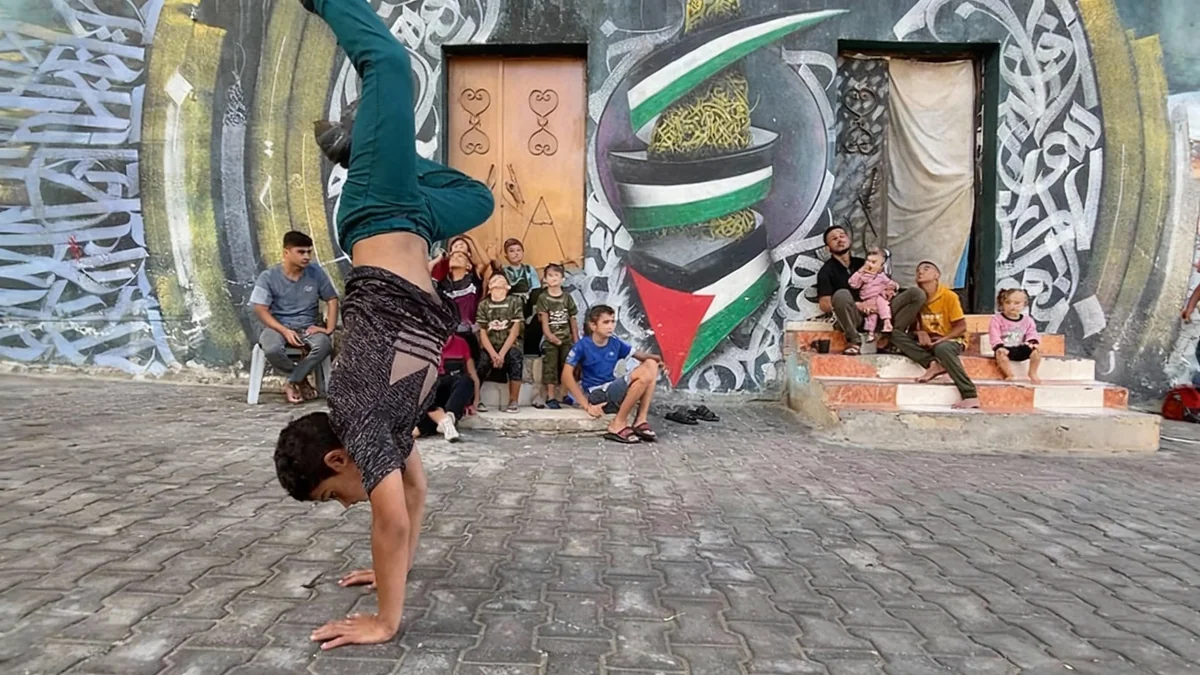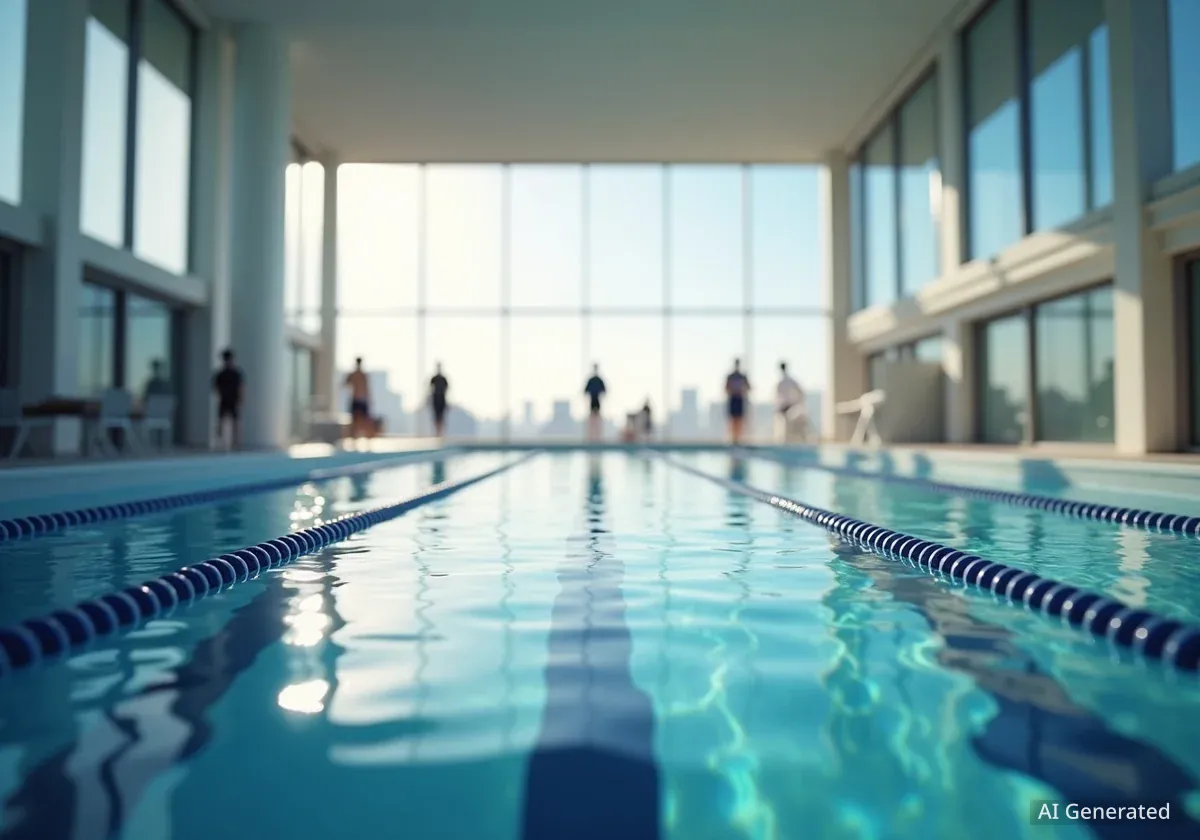Medical professionals and artists are increasingly advocating for the arts to be recognized as a fundamental component of global health. This growing movement highlights the significant impact of artistic engagement on physical, mental, and social well-being, pushing for it to be considered as essential as exercise, proper sleep, and healthy eating.
The Jameel Arts & Health Lab, in collaboration with the World Health Organization, recently championed this cause during New York's Healing Arts Week festival. The event underscored a pivotal shift in understanding how different factors contribute to overall health. For the first time in its 202-year history, the prestigious medical journal The Lancet published a photo essay illustrating the profound connection between art and health, showcasing diverse examples from around the world.
Key Takeaways
- Arts engagement is now seen as a vital health behavior.
- Medical journals like The Lancet are publishing evidence.
- Arts programs can help prevent non-communicable diseases.
- Participation strengthens social connections and reduces loneliness.
- Policymakers are starting to consider arts funding for health.
A Turning Point in Health Understanding
Nisha Sajnani, co-director of the Jameel Arts & Health Lab and a professor at New York University, emphasized the evolving perspective. She stated that engaging with the arts is not merely a luxury but a fundamental part of health infrastructure. According to Sajnani, investments in cultural participation should be on par with investments in clean water, nutrition, and safe housing, recognizing its role as a key determinant of well-being.
Did You Know?
The Lancet, a leading medical journal, published its first-ever photo essay this month, focusing entirely on the health benefits of the arts.
The photo essay in The Lancet features 32 striking images that visually articulate the healing power of art. One notable photograph, by French street artist JR, depicts portraits of inmates and security guards from California’s Tehachapi maximum-security prison. These large-scale portraits were pasted onto the prison yard, creating a powerful visual statement.
"My hope is that this image of our project sparks important questions and dialogue about the role of the arts in creating healthier communities," JR explained. "This series on the health benefits of the arts marks an important opportunity for us to deepen the conversation about the ways art can create wellbeing in unique and meaningful ways, even in the most complex of spaces."
Other images in the essay include people donating blood inside the Museum of Fine Arts in Orléans, France, a breakdancing boy in Gaza, and the iconic AIDS Memorial Quilt in Washington, D.C. The quilt, created in 1987, aimed to combat the stigma surrounding the disease and remains a powerful symbol of remembrance and advocacy.
Visual Manifestos and Scientific Validation
Solkem N’Gangbet, head of the office of the arts at Saudi Arabia’s King Abdullah University of Science & Technology and a member of the photo essay’s curatorial team, described the collection as more than just photographs.
"This isn’t just a photo essay, it is a visual manifesto," N’Gangbet said. "It speaks to what the scientific data now confirms: the arts heal. And for the first time, The Lancet, one of the world’s leading medical journals, gives space to the image, to the story, to the lived experience, including those from communities in Africa, Asia, Latin America and other regions too often left outside the frame."
This initiative by The Lancet is not an isolated event. Another prominent journal, Nature Medicine, recently published a review of 95 arts programs across 27 countries. These programs specifically targeted non-communicable diseases such as heart disease, diabetes, and cancer. The review concluded that arts participation provides strong evidence for supporting disease prevention and health promotion.
Preventing Disease Through Art
Non-communicable diseases (NCDs) are chronic conditions that do not spread from person to person. They include heart disease, stroke, cancer, diabetes, and chronic respiratory diseases. NCDs are responsible for a significant number of deaths globally, and prevention strategies are crucial for public health.
The study highlighted how the arts achieve this by fostering cultural relevance, encouraging physical activity, and enhancing social connectedness among participants. These elements are critical for maintaining health and preventing the onset of chronic conditions.
The Arts as a Prevention Strategy
Jill Sonke, lead author of the Nature Medicine study and director of research initiatives at the University of Florida’s Center for Arts in Medicine, believes the effectiveness of arts programs could lead to direct health funding. She emphasized a shift towards prevention rather than just treatment.
"We don’t want to just treat these diseases, we want to prevent them," Sonke stated. "We would love to see funding and interventions move upstream from treatment toward prevention, and the arts should be part of that prevention strategy, because they really can help."
Research also indicates that engaging with the arts offers protection against cognitive decline and can reduce the risk of dementia. Furthermore, cooperative arts activities can strengthen social connections, effectively combating loneliness and various mental health issues. These activities often create "sticky habits," meaning people are more likely to continue participating due to the enjoyable and beneficial nature of the engagement.
- Cognitive benefits: Arts participation helps protect against cognitive decline and reduces dementia risk.
- Mental health: Strengthens social bonds, fighting loneliness and improving mental well-being.
- Community impact: Creates lasting, positive habits through enjoyable group activities.
A study conducted for the UK’s Department for Culture, Media and Sport last year provided concrete evidence of these benefits. Older adults who attended drawing classes as part of a "Thursday at the Museum" event reported improved well-being. This led to fewer doctor visits, resulting in a financial saving estimated at £1,310 per person.
Political Recognition and Future Investments
The growing body of evidence is starting to gain traction in political circles. Stephen Stapleton, founding co-director of the Jameel Arts & Health Lab, noted that the EU Commissioner for Culture attended Healing Arts Week. The Commissioner even suggested organizing a meeting of European policy leaders to discuss the subject further, indicating a potential for wider governmental support.
"All these data points are starting to frame the arts as a health behavior," Stapleton explained. "Sixty years ago, it wasn’t a given that exercise, or sleep, or even nutrition were good for you. But as all the evidence built up, medical professionals realized their role. Based on the science, the arts are increasingly being recognised for their impact on wellbeing, and their essential role in living a full and healthy life."
This emerging consensus suggests a future where cultural participation is not just appreciated for its aesthetic value but actively promoted and funded as a crucial public health intervention. The shift represents a more holistic approach to health, acknowledging the profound and often overlooked contributions of the arts to a thriving society.




